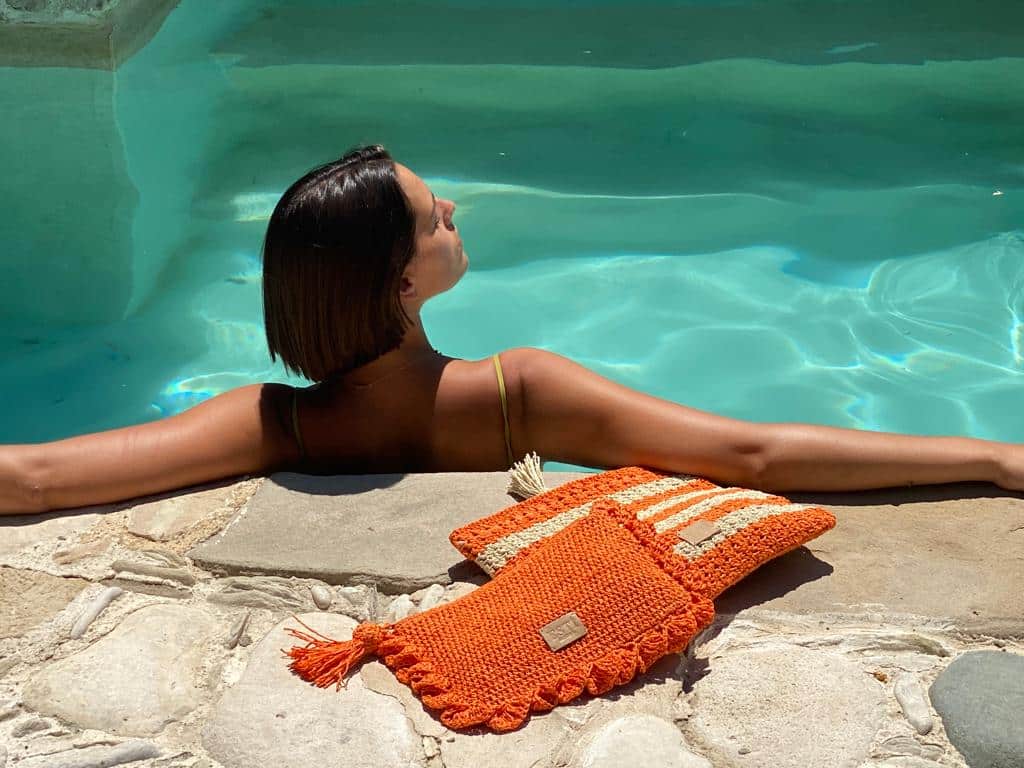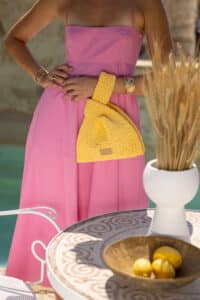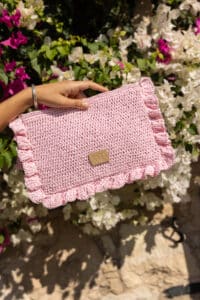Alix Norman meets the woman who’s putting the ‘Made’ back in ‘Made in Cyprus’
Once upon a time, everything our ancestors owned, they made themselves – from local materials.
Our village homes (built with regional stone, or handmade wattle and daub), our containers for water and wine (fashioned from clay or leather), our traditional clothes (threads spun and woven into intricate patterns), our furniture and hand-carved doors – everything was made in Cyprus, by Cypriots.
But, under British rule, this started to change. With a vast empire at their disposal, the colonists began to import everything from metal to cloth, from accessories to electrical items. And the island’s people were urged to shop at apoikiaka – specific shops that sold imported goods.
“And today,” says Christina Tserkezi, “you’d be hard pressed to find a single item that is made entirely from locally-sourced materials, or even entirely through local labour. Other than the odd ceramic pot – which may well have been created with a potter’s wheel made in China, and painted with brushes bought in the UK – almost everything you see has been outsourced in some way. Foods aside, it’s almost impossible to find an item that has, from start to finish, been created completely in Cyprus.”
The founder of ESTÍ Artisans, Christina is an exponent of sustainability and traceability. Having worked in fashion for many years, first as a journalist and later as chief editor for MUST and Omikron, she’s seen first-hand what fast fashion can do to the planet – and, even worse, to our island.
“People love the latest trends, the newest fashions, especially in Cyprus,” she says. “We’re all about what’s new, what’s hot, what’s in. And we tend to brush aside our heritage crafts, alongside the notion that all this ‘newness’ could be really bad for the planet.”
This is particularly evident in textile production, an industry that’s extremely harmful to the environment. The worst offender is fossil fuels, closely followed by agriculture. But textiles come a close third, well above transport and construction. In the US alone, fast fashion makes for a huge amount of wash-wear-and-toss wastage: 11 million tonnes – the weight of 1,000 Great Pyramids – are binned each year!
Textile production – which is one of the main causes of global water pollution – has doubled over the last 15 years; by 2030, the amount of clothing and footwear produced annually is set to reach 100 million tonnes. And, while no statistics are immediately available for Cyprus, the island has recently ranked dead last in the EU in terms of meeting sustainable development goals across all sectors.
“It’s not good, is it?” asks Christina. “We’re putting our local craftspeople out of business by turning away from locally made, regionally sourced items. Especially in terms of clothing and accessories, where we seem to favour what is often badly-made, fast foreign fashion.”
With ESTÍ Artisans, Christina is hoping to raise awareness of this issue, changing the narrative by bringing the craft back to the craftspeople of the island.
“There are so many talented artisans in Cyprus,” she explains. “So many people who can weave the baskets, carve the wood, work the copper to create beautiful, island-made items in a manner our ancestors would have found familiar. Yes, lefkaritiko [lace] and silversmithing are still big business. But what about the other crafts; what about leather-working and weaving and crocheting? These shouldn’t exist merely to make titillating trinkets for tourists; they are part of our heritage, and should be both celebrated and practised.”
In her new venture, Christina is bringing one craft in particular home to its roots. Horrified by the quality of bags on sale in souvenir shops, but a lifelong lover of woven crafts – “I grew up with clothes embroidered or crocheted by my mother and grandmother; sewing, knitting and stitching were my everyday companions” – she’s been inspired to create a line of raffia clutches and totes in which every possible element is locally made.
“In this day and age, it’s almost impossible to create an item entirely from scratch in Cyprus,” she reiterates. “But I’ve done my best with ESTÍ. The raffia is mainly sourced right here on the island. The linen for the interiors has again been sourced from local stores. The bags are crocheted by elderly artisans in Nicosia; women chosen for their intricate knowledge of a dying craft. Even the leather detailing,” she adds, “is completed by a wonderful old gentleman who has, over the years, seen his craft disappear almost entirely from the island.
“Traceability and transparency,” she continues, “are the keys to sustainable fashion. At ESTÍ, we’re transcending fast fashion to celebrate our heritage crafts: tracing every material we can, providing jobs for skilled local artisans – this is our ethos.”
The brand’s first collection typifies this idea, celebrating Cypriot craft and craftspeople. Each is crocheted to order from eco-conscious materials (in the main, sustainable raffia from the Raphia Farinifera palm). And the four styles are named for Christina’s beloved female relatives: her grandmother Aphrodite; her mother-in-law Evdokia; her daughter Sophia; and Athena for both her mother and daughter.
Similarly, the colours of the bags also allude to the island’s most iconic hues: “A reference to the seasons and scenery of Cyprus,” Christina reveals. “Here, we have the rolling green fields of spring, the golden sands of summer, and blacks and browns of the rich earth after winter rainfall. The bright yellows of our lemon trees, and the intense orange of seaside sunsets. And the pinks of blooming oleander bushes, the purples of cascading bougainvillaea…
“Like the colours of this island, these are bags that will stand the test of time,” Christina concludes. “And all are a testament to our deep bond with nature, and our connection to the crafts of our past. In ESTÍ, we’re revisiting our roots: paying tribute to our mothers, aunts and grandmothers; to all the women – and men – who built this country from the ground up. With an ESTÍ bag you carry the essence of Cyprus. A bag that tells – and revives – the story of our island’s nature, culture, and heritage.”
For more information visit the Facebook page Esti.Artisans or the Instagram account @esti.artisans










Click here to change your cookie preferences